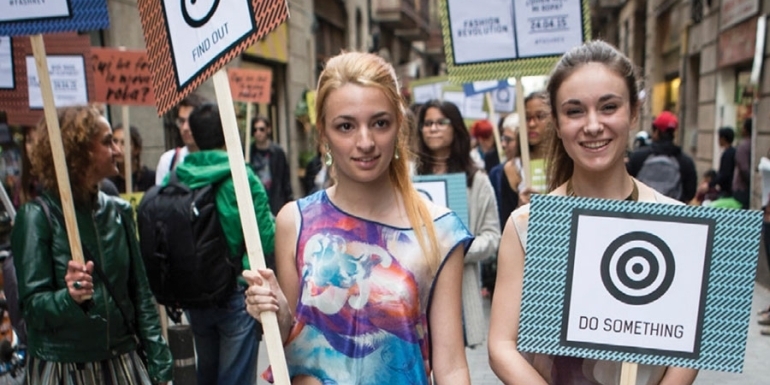Second You supports a Fashion Revolution mission. Fashion Revolution Week has just ended but its message is very relevant and current. Inspect your favorite brands and consider asking them the following question: “Who sewed my clothes?” We are not afraid to answer this specific request.
Fashion Revolution was founded to protest against inhumane work conditions in clothes factories that manufacture products for the world’s most popular fashion brands. It was initiated shortly after a catastrophe in the Rana Plaza factory in Bangladesh where 1100 people died due to the collapse of a building. Emergency action was ignored by the factory manager because he prioritized production over the lives of the workers. The tragedy was talked about worldwide, whereby the biggest players in the fashion industry were bombarded with questions about their production processes, fairtrade and employee safety. A lot of social movements, protest actions, and short-term initiatives were organized to express opposition to the fast fashion trend. But the most impactful gesture in favor of quality manufacturing is accessible to all of us – the importance of a change of habits.
A few decades ago there were only four seasons in the fashion industry, nowadays it can reach as far as 52. There are brands that introduce new collections every week, which generate a huge amount of waste and pollution. Not to mention social implications – someone needs to produce these clothes. It most certainly happens under time pressure, in exchange for a shoestring budget, and in a cramped factory that barely stands firm. Clothes produced in such conditions, with low-quality materials, wear out very quickly, providing motivation for the next purchase. Low prices come across as a great bargain so we are more eager to buy a replacement for a torn
Buying cheap clothes without considering our actual needs, is
Ladies, Fashion Revolution and other initiatives supporting Slow Fashion movement is our chance to prove our solidarity to other women and girls. Those who willfully create sustainable & quality clothing brands, and those who spend over 10 hours, sitting next to and controlling their sewing machines. Our habits and our choices influence their work conditions and their standard of life. We have put together a list of ideas that can help you introduce the Slow Fashion philosophy to your closet:
Take up the 333 challenge – for 30 days you piece your outfits together using only 33 pieces of clothing (including shoes and accessories). This task helps you to evaluate which clothes you actually wear and like, and which can be given away to a friend or local charity. This experiment – if successful – can work as an introduction to a capsule wardrobe.
Look through your closet every once in a while to identify the pieces that you no longer use and try to think how to give them a new life. Look up charity actions, call a local children's home or ask around in your friends' circle – maybe someone could use a couple of sweaters or baby clothes which have hardly ever been worn. How about organizing a swap party? You can also sell your clothes online – there are plenty of platforms dedicated to second-hand fashion trade.
Bond with a tailor! Do you have a small hole in your clothes or ripped off wristband? For a professional, it’s a 5-minute job.
Buy second-hand clothing! Not a fan of used items? Hm, how about outlet stores? Or personal closet sale organized by your girlfriends? People often get rid of beautiful, well-maintained clothes that can easily be used by others for years.
Wear smaller, local brands – their designers often rely on local manufacturers and draw supplies that are locally available. Their products stand out with their quality, with a perfected design and original fashion. Low-key brand personality allows for the more intimate relation which is difficult to achieve with a global chain brand.
Pay attention to the quality of the clothes. Pieces manufactured from decent, natural textiles are priced at a higher rate, that’s true. On the other hand, they can survive for years in very good condition. The bottom line is – their price is actually more attractive than their cheap equivalents that won’t make it
Ladies, I wish you good luck with your fashion choices. I realize that giving up on a sale or saying goodbye to a box of clothes that “I may wear one day” is not an easy step. I also know how satisfying and rewarding it is to make that step. It also makes your life easier – no matter how cliche it sounds. Less is more, try it. We try every day as well.
If you are interested in learning more about Slow Fashion & Fast Fashion, we recommend research conducted by Study New York that compares both philosophies and evaluates their implications on many levels.







Leave a Reply Cancel Reply